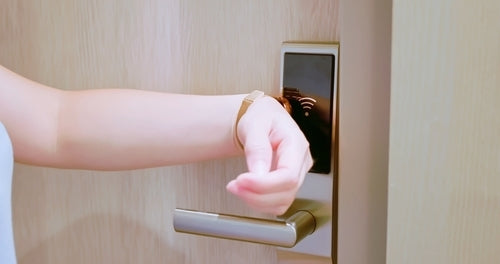No Products in the Cart

Proximity wristbands (also known as proximity bracelets) have emerged as a revolutionary access control technology in the healthcare sector. These wearable devices offer numerous advantages that enhance patient care, streamline personnel workflows, and improve overall operational efficiency. By harnessing the power of proximity technology, healthcare providers can transform the way they deliver services. In this article, we will explore the advantages of proximity wristbands and proximity bracelets, and delve into how they are revolutionizing the landscape of healthcare.
Proximity wristbands and bracelets play a crucial role in enhancing patient safety and security within healthcare facilities. Proximity wristbands utilize an advanced technology known as Radio Frequency Identification (RFID) that enables them to communicate with proximity readers with a simple tap or wave. In the realm of healthcare operations, this technology can be leveraged in a variety of ways, all of which improve patient safety and security.
As an access control technology, proximity wristbands and proximity bracelets contribute to enhanced security by preventing unauthorized access to sensitive areas within healthcare facilities. Proximity wristbands/bracelets can be programmed into the healthcare facility’s access control security system and accordingly distributed among healthcare officials to ensure that only authorized individuals can obtain access to restricted parts of the facility. Given the wearable nature of these proximity devices, moreover, they enhance security without sacrifice to efficiency and convenience.
Additionally, proximity wristbands and bracelets can be programmed with vital patient information (such as allergies, medical conditions, medications, etc.) and distributed to each patient, allowing healthcare personnel to access necessary patient data with a simple scan of the patient’s wristband. As such, by wearing proximity wristbands, not only can patients be easily identified—ensuring that the right care is provided to the right individual—but this technology also allows healthcare professionals to access crucial data quickly, reducing the risk of errors and enabling more informed decision-making. In emergency situations, proximity wristbands enable rapid identification, ensuring timely medical interventions.
Proximity wristbands and proximity bracelets also streamline workflows and enhance operational efficiency in healthcare settings. With proximity technology, healthcare providers can automate various processes, reducing manual tasks and paperwork. For example, healthcare professionals can use proximity wristbands to quickly and accurately record patient attendance with a mere scan of the patient’s wristband, eliminating the need for manual sign-in processes.
Proximity wristbands and bracelets can also be integrated with Electronic Health Record (EHR) systems, enabling seamless data capture and transmission. This eliminates the need for manual data entry, reducing the risk of errors and ensuring that patient information is always up to date. With proximity wristbands, healthcare providers can access patient records, treatment plans, and medication information in real-time, facilitating faster decision-making and improving the quality of care.
Additionally, proximity wristbands can be used for asset tracking within healthcare facilities. By tagging valuable equipment, pharmaceutical storage, and other valuable assets with proximity readers and requiring personnel to scan their wristbands before accessing these assets, healthcare organizations can easily monitor to use of their resources, reducing inventory discrepancies and improving overall efficiency.
Proximity wristbands and proximity bracelets have revolutionized healthcare by improving patient safety and security, streamlining workflows, and enhancing overall operational efficiency. Through the power of RFID technology, these wearable devices offer extensive security protocols, rapid patient identification, streamlined workflows, and enhanced operational efficiency. As healthcare providers embrace the advantages of proximity wristbands and bracelets, the future of healthcare is poised to become more patient-centered, efficient, and secure.